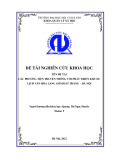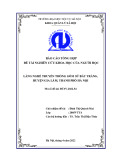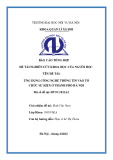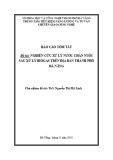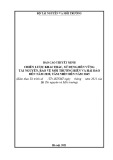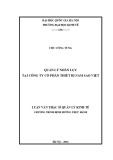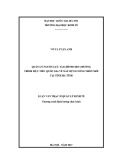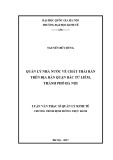
BÁO CÁO
TỔNG QUAN CÁC NGHIÊN CỨU VỀ GIẢM NGHÈO
Ở VIỆT NAM
BỘ LAO ĐỘNG - THƯƠNG BINH
VÀ XÃ HỘI


BÁO CÁO
TỔNG QUAN CÁC NGHIÊN CỨU VỀ GIẢM NGHÈO
Ở VIỆT NAM
NGUYỄN THỊ THU HÀ
NGUYỄN VIỆT NGA
NGUYỄN THANH PHƯƠNG
NGUYỄN VĂN THỤC
HÀ NỘI, 2015
BỘ LAO ĐỘNG - THƯƠNG BINH
VÀ XÃ HỘI


5
Báo cáo Tổng quan các nghiên cứu về giảm nghèo ở Việt Nam
y Summary
l
l
l
l
l
l
l
l
l
l
l
Từ viết tắt
BHTN Bảo hiểm Thất nghiệp
BHYT Bảo hiểm Y tế
Bộ KH&ĐT Bộ Kế hoạch và Đầu tư
Bộ LĐTB&XH Bộ Lao động Thương binh và Xã hội
Bộ NN&PTNT Bộ Nông nghiệp và Phát triển Nông thôn
Bộ TC Bộ Tài chính
CPI Chỉ số giá tiêu dùng
Chương trình MTQG Chương trình Mục tiêu quốc gia
DTTS Dân tộc thiểu số
ĐTMSDC Điều tra mức sống dân cư
HDI Chỉ số phát triển con người
MDG Mục tiêu thiên niên kỷ
KHXH Khoa học Xã hội
TCTK Tổng cục Thống kê
UBDT Ủy ban Dân tộc
UNDP Tổ chức Phát triển Liên hợp Quốc
UNFPA Quỹ Dân số Liên hợp Quốc
VPQGGN Văn phòng Quốc gia giảm nghèo
WB Ngân hàng Thế giới
XĐGN Xóa đói giảm nghèo



